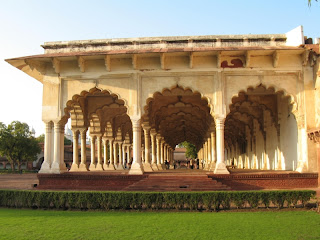On the day of Nag Panchami , people offer milk to snakes. This festival is celebrated all over India Bengal some people wrap snakes around their bodies and march along the seashore. In Bihar people roam about in boats in the rivers and with the image of Beula ( Behra), a young bride whose piety saved her husband from death by snake bite. In Bihar , the Santhal tribes christen their young girls as ‘Visha kanya’ meaning girls with poison. They carry on their necks an ampoule of snake venom and a nail to forestall any attack on her by miscreants.
In Assam , and some parts of Bengal , people worship the goddess of Snake Ma Manasa in the month of Ashar and Shravana (June—August), when the snakes are most active. She is believed to save people from snake bites. She is also attributed with the powers of curing infectious diseases like small-pox and of bringing wealth and prosperity. She is known as the daughter of Kasyapa, a famous sage, and Kadru, the sister of the serpent-king Sesha and Vasuki. It is said that she attained recognition and a place in Hindu mythology through the tale of Beula and Lakhinder.
Lakhinder was the seventh son of a merchant-prince, Chand Saudagar. Chand had six sons from his first marriage and all the six sons died after they were bitten by snake. Then he remarried and gave birth to another son, Lakhinder. Chand was an ardent devotee of Lord Shiva. When Manasa heard of this, she became determined to force Chand to offer worship to her and become her first follower, as at that time she had no devotees on earth. Manasa thought that if she could get him to worship her other people would soon follow and she would have a large number of devotees. So, Manasa approached Chand and ordered him to offer worship to her. But, Chand was not impressed with the goddess's demand. However, Manasa tried hard to impress him in different avatars, but failed.
When Lakhinder grew up to a young handsome man, Chand fixed his marriage to Beula. However, Manasa did not give her hope and tried again to urge Chand to worship her. She also threatened Chand with the life of Lakhinder. But, Chand did not pay a heed to her demand. Finally, Manasa killed Lakhinder on the first night of his marriage by sending a poisonous snake to bite him.
It was the general belief of that time that, a person who had died from snake-bite still had life within his or her body and it needed only an expert snake-charmer to bring such a person back to life. So, his body was set afloat on the river. When the body of Lakhinder was ready to be set afloat, Beula expressed her wish to accompany her husband's dead body on its last voyage. When she reached the bank of the river with the dead body of her husband, she came across a washerwoman, and soon understood that she was not an ordinary woman. She was miraculous enough to revive her husband, so Beula pleaded her to save her husband, and then the woman immediately led her to the goddess Manasa. When Beulah reached Manasa's abode and asked for her blessing in bringing back her husband to life the goddess told her that she was willing to bring Lakhinder back to life only if Beula converts Chand, her father-in-law, to her worship. Beulah readily agreed and, accordingly, Manasa revived Lakhinder.
Faced by the pleading eyes of his beautiful daughter-in-law Chand's resolve broke at last. He agreed to offer worship to Manasa. Manasa was pleased and she blessed Chand and his family with peace and prosperity. Her fame on earth was also established after this story spread and many devotees thronged to her altar.
During Manasa Puja, Oja pali and Deodhani dance are performed in the regions of Darrang, Kamrup and Goalpara. Deodhani dance form is common within the southwest Kamrup & Darrang regions of the Assam
They also create quasi-dramatic situations to explain the story and create a sense of humour in order to delight the masses. Sukannani dancers wear chapkan sola (long sleeved white gowns), chadar, pag, unti, nupur and phot (bindi) of chandana.
They also create quasi-dramatic situations to explain the story and create a sense of humour in order to delight the masses. Sukannani dancers wear chapkan sola (long sleeved white gowns), chadar, pag, unti, nupur and phot (bindi) of chandana.
Innumerable shrines containing images of the snake god and goddesses bear eloquent testimony to the influence of serpent on the social and spiritual fabric of India temple of Sualkuchi , Assam
In the Nameri National Park of Assam, one can find an array of snakes like: Common Blind Snake, Myanmarese Python, Indian Cobra, King Cobra, and Pit Viper, whereas , Indian Rock Python, Black Krait, King Cobra, Cobra can be found in the Rajiv Gandhi Orang National Park.














































